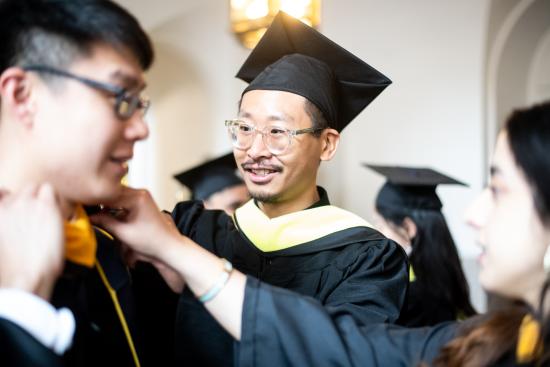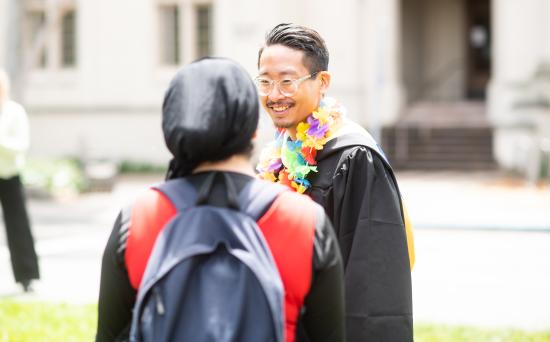Soravis (Sun) Prakkamakul graduated from the School of Information with a Master’s in Information Management and Systems in 2019. Prior to the I School, Soravis completed a Bachelor of Computer Engineering at Chulalongkorn University in Bangkok, Thailand. He currently works at Apple as a 3D software engineer.
Why did you choose the I School?
Engineering and design have been my major interests. Unfortunately, in Thailand, there were no carved paths for people who are interested in both. I started off as a software engineer in a design agency, fell in love with Design, and later found myself taking on pixel-pushing gigs here and there. That’s when I discovered that I could study Human-Computer Interaction (HCI) at the graduate level. In my search for HCI programs, the I School stood out from other more traditional HCI programs by offering a strong focus on sociology, ethnographic research, and data analysis which I found to be extremely useful for what I’m doing. Berkeley’s location in the Bay Area is also a great perk. I was in a tech startup scene in Thailand and we heard stories about the startup ecosystem in the Bay Area. Now, I’m so excited to be immersively living the experience.
What was your focus while at the I School?
I decided to take on the New Media emphasis on top of my focus in HCI. My favorite kind of project at the I School are those involving tools for creative expression. Some examples of what I worked on include a device for controlling musical interfaces with facial expressions, an iPad app that turns hand sketches into high fidelity UI designs, a new text entry solution of VR. For my final project, I swayed from that path a bit and worked on an art installation with Joyce S. Lee and Sejal Popat. Our project questions the authority of algorithms by drawing parallels to fortune-telling.
What is the I School’s advantage?
I would say it is the diverse interdisciplinary community the I School has to offer. It’s one of the few programs I know of where people far on the analytical side of the spectrum work closely with the people on the arts and humanities side in a small closely-knit community. You can find people who are passionate about machine learning, analytics, user research, ethnographic studies, visual design, as well as law and policy. It reminds me to see outside of the tech bubble where not everything is about disruption and growth. At the same time, the community makes it quite frictionless to set up project teams to take on important problems.
What was your favorite class?
I really enjoyed Theory and Practice of Tangible User Interfaces (TUI) by Professor Kimiko Ryokai. The class covers much of interaction design foundations such as Activity Theory, Affordances Theory, as well as how to prototype with electronics. The assigned readings were seminal papers in HCI that defined what we’ve known today as tangible UIs. The class also puts a large emphasis on the studio aspect. The weekly assignments were truly enjoyable to work on. We were assigned to build mini-TUIs from the topics we’ve learned each week. Lastly, our team worked a final project that got into Late-Breaking Work at the CHI conference.
An information challenge that intrigues me…
I am really thrilled about designing for emerging technologies. How might we test concepts of a technology that are not yet ready today and understand its implications? One reason is that I love prototyping to begin with. The question also introduced me to the field of Speculative Design and approaches such as Design Fiction which is also an active research area here at the I School. It turns out that Berkeley has a lot to offer for this realm of thinking. I discovered classes such as Critical Making and Alan Cooper’s Ancestry Thinking in which Speculative Design is an overarching theme. Through the User Experience Research (formerly, Needs and Usability Assessment) class, I learned about the Wizard of Oz method where we simulate the interactions by having real people playing them out behind the scene.
What are you doing now?
I’m currently working at Apple as a 3D software engineer. My role involves prototyping technologies that might or might not end up in Apple products. Unfortunately, I couldn’t talk more about it but hope that we can see them coming out of the black curtain someday.
Do you have any advice for aspiring information professionals?
Keep running small experiments here and there. That could be working on small projects, designing fictional mock-ups, or conducting initial user research on a problem that you really care about. You never know where that will take you. At least, it could be a quick test for whether you’re really passionate about the problem area.













